
| Floating ice are seen from China's icebreaker Xuelong, or "Snow Dragon", after the icebreaker crossed the Arctic Circle, July 20, 2012. Xuelong, an A-2 class icebreaker capable of breaking ice 1.2 meters thick, is about to conduct comprehensive research at 33 oceanic observation stations in the Pacific Arctic and Atlantic Arctic regions during its three-month voyage. It is scheduled to return to Shanghai on Sept. 29. (Xinhua/Qu Jing) |
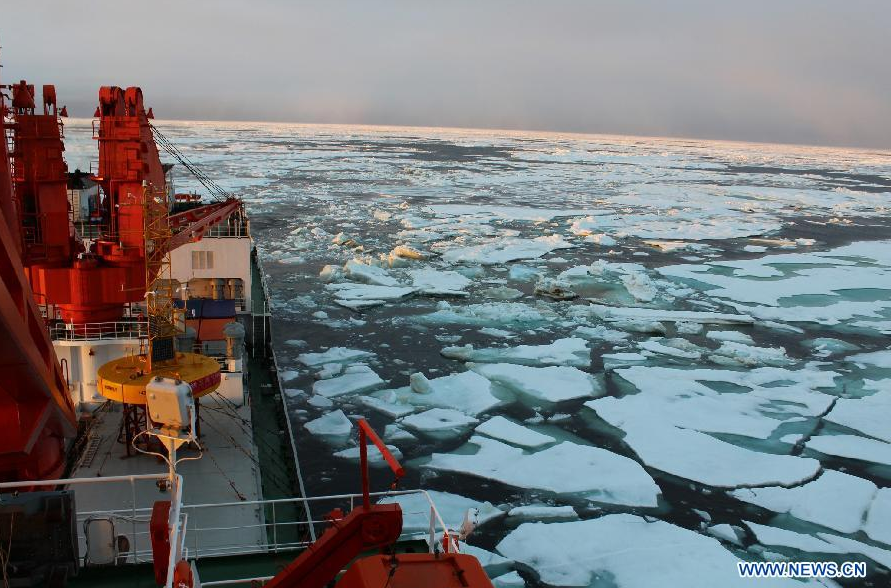
| China's icebreaker Xuelong, or "Snow Dragon", runs forward through floating ice after crossing the Arctic Circle, July 20, 2012. Xuelong, an A-2 class icebreaker capable of breaking ice 1.2 meters thick, is about to conduct comprehensive research at 33 oceanic observation stations in the Pacific Arctic and Atlantic Arctic regions during its three-month voyage. It is scheduled to return to Shanghai on Sept. 29. (Xinhua/Qu Jing) |
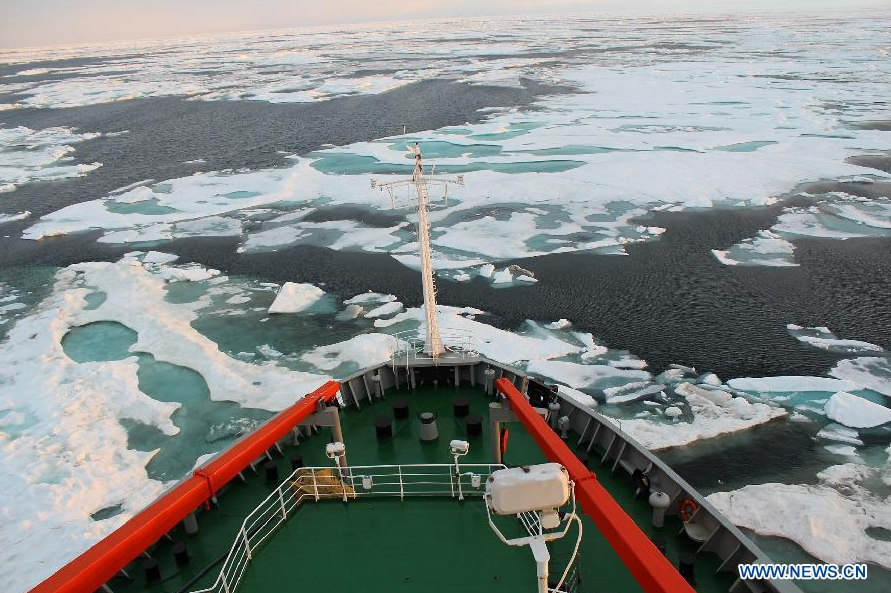
| China's icebreaker Xuelong, or "Snow Dragon", runs forward through floating ice after crossing the Arctic Circle, July 20, 2012. Xuelong, an A-2 class icebreaker capable of breaking ice 1.2 meters thick, is about to conduct comprehensive research at 33 oceanic observation stations in the Pacific Arctic and Atlantic Arctic regions during its three-month voyage. It is scheduled to return to Shanghai on Sept. 29. (Xinhua/Qu Jing) |
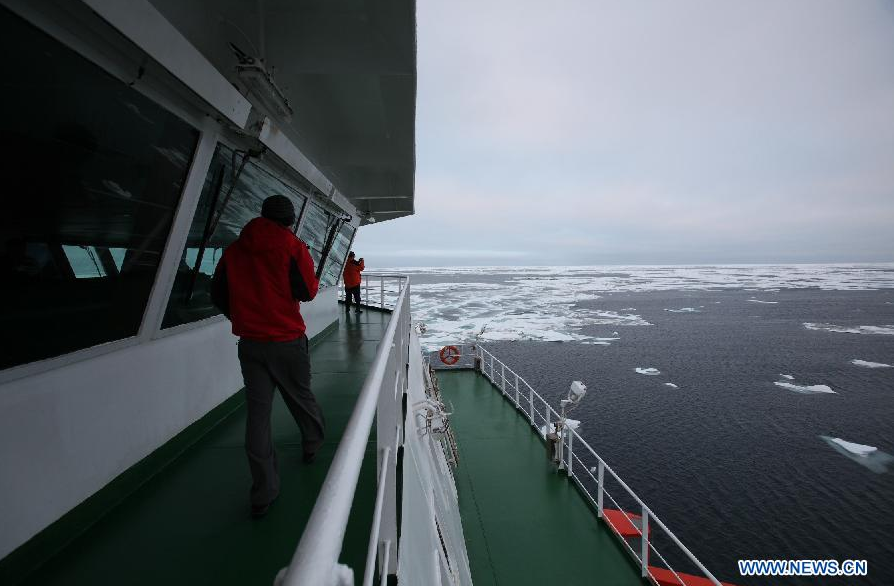
| China's icebreaker Xuelong, or "Snow Dragon", runs forward through floating ice after crossing the Arctic Circle, July 20, 2012. Xuelong, an A-2 class icebreaker capable of breaking ice 1.2 meters thick, is about to conduct comprehensive research at 33 oceanic observation stations in the Pacific Arctic and Atlantic Arctic regions during its three-month voyage. It is scheduled to return to Shanghai on Sept. 29. (Xinhua/Qu Jing) |
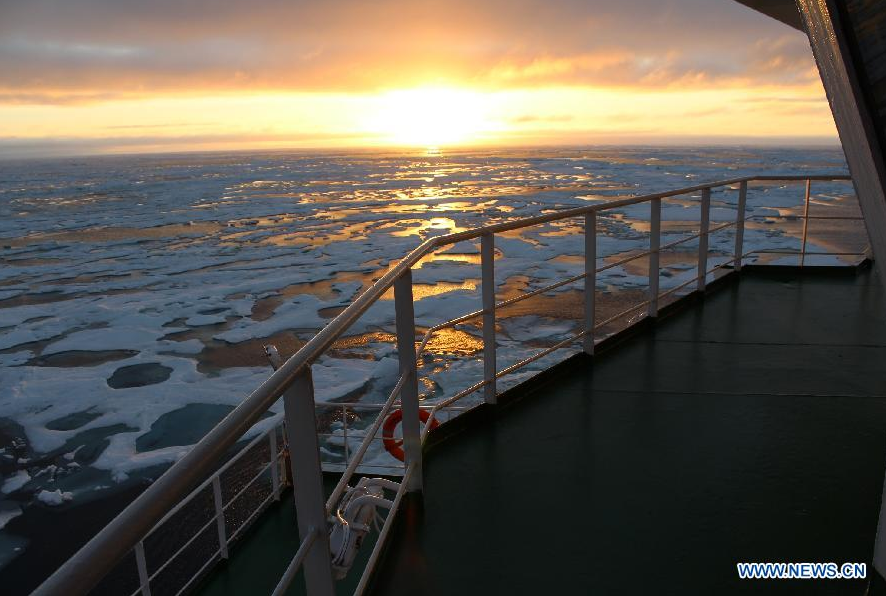
| China's icebreaker Xuelong, or "Snow Dragon", runs forward through floating ice after crossing the Arctic Circle, July 20, 2012. Xuelong, an A-2 class icebreaker capable of breaking ice 1.2 meters thick, is about to conduct comprehensive research at 33 oceanic observation stations in the Pacific Arctic and Atlantic Arctic regions during its three-month voyage. It is scheduled to return to Shanghai on Sept. 29. (Xinhua/Qu Jing) |

| Floating ice is seen on board of China's icebreaker Xuelong, or "Snow Dragon", July 20, 2012. Xuelong, an A-2 class icebreaker capable of breaking ice 1.2 meters thick, is about to conduct comprehensive research at 33 oceanic observation stations in the Pacific Arctic and Atlantic Arctic regions during its three-month voyage. It is scheduled to return to Shanghai on Sept. 29. (Xinhua/Qu Jing) |
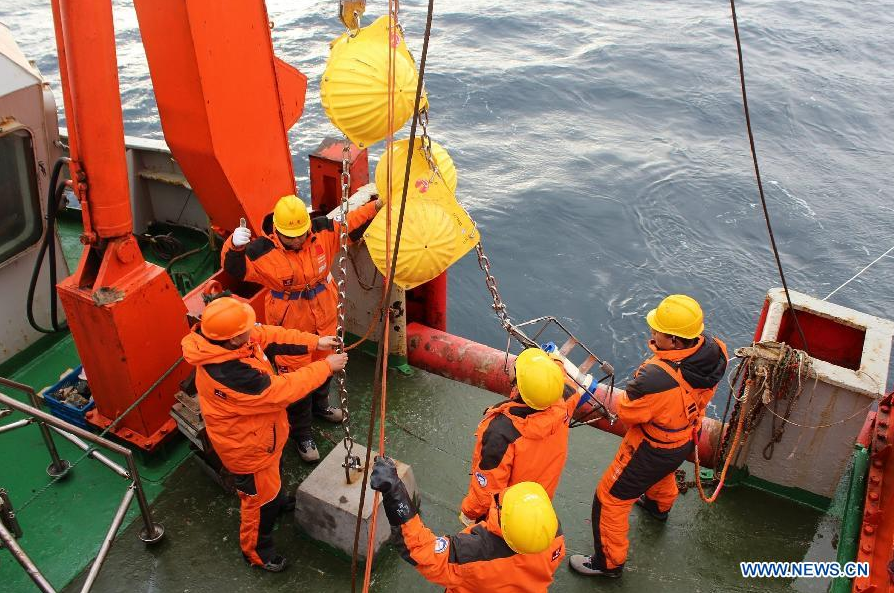
| Science team set up experimental facilities on board of China's icebreaker Xuelong, or "Snow Dragon", July 21, 2012. Xuelong, an A-2 class icebreaker capable of breaking ice 1.2 meters thick, is about to conduct comprehensive research at 33 oceanic observation stations in the Pacific Arctic and Atlantic Arctic regions during its three-month voyage. It is scheduled to return to Shanghai on Sept. 29. (Xinhua/Qu Jing) |

| Floating ice is seen on board of China's icebreaker Xuelong, or "Snow Dragon", July 20, 2012. Xuelong, an A-2 class icebreaker capable of breaking ice 1.2 meters thick, is about to conduct comprehensive research at 33 oceanic observation stations in the Pacific Arctic and Atlantic Arctic regions during its three-month voyage. It is scheduled to return to Shanghai on Sept. 29. (Xinhua/Qu Jing) |

| Science team set up experimental facilities on board of China's icebreaker Xuelong, or "Snow Dragon", July 21, 2012. Xuelong, an A-2 class icebreaker capable of breaking ice 1.2 meters thick, is about to conduct comprehensive research at 33 oceanic observation stations in the Pacific Arctic and Atlantic Arctic regions during its three-month voyage. It is scheduled to return to Shanghai on Sept. 29. (Xinhua/Qu Jing) |
|